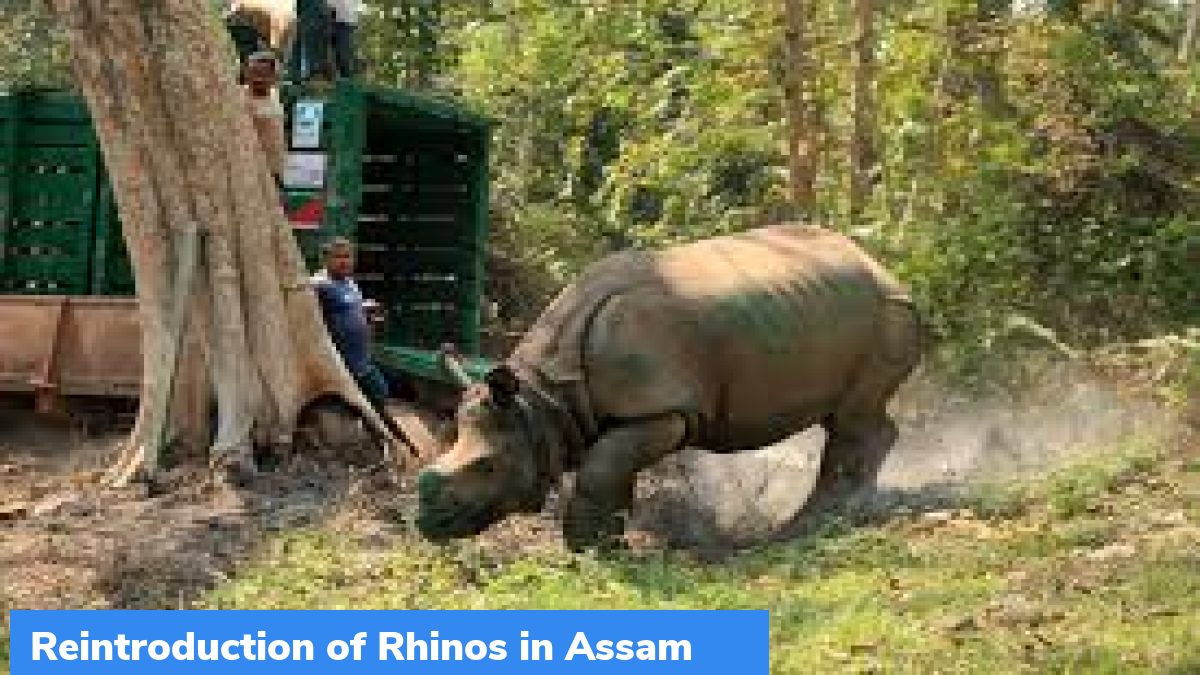Rhino reintroduction in Assam
According to the 14th Assam rhino estimation, Rhinos in Manas National Park have higher life expectancy, however they need translocation support.
About the 14th Assam rhino estimation
- Rhino census was carried out in all three ranges of Manas National Park namely, Bhuyanpara, Bansbari and Panbari, comprising of 71 estimation blocks.
- Current rhino population was estimated at 40, in the park.
- Rhinos in the park have a male-female sex ratio of 1:1.
- Number of calves born in the wild reflects availability of welfare factors for fostering rhinos in the park.
Which method was used to count Rhinos?
Rhino census was carried out by ‘Total count or Direct count method’. Total count method is preferred, when a single species is targeted to be counted in specific area. This method assumes detection probability as one, meaning that every animal has a 100% chance of being seen during counting period.
Limitations of total count method
- Undercounting is one of the limitations of this method, because it assumes detection probability of 1 which is unrealistic.
- The method requires high visibility for observing animals from far off, which is not possible with “shy, cryptic animals”.
What is the need of translocation?
The one-horned rhinos of the Western part of Manas National Park, bordering Bhutan, have an age structure pyramid, which suggests that they have higher life expectancy and there is significant growth in their population. But the Indian side of the park does not have a wider representation of sub-adults and calves for sustaining the population structure. Thus, translocation is needed to supplement them.
Greater One-Horned Rhino
Three species of rhino are found in Asia namely Greater one-horned (Rhinoceros unicornis), Javan and Sumatran. Five rhino range countries include India, Nepal, Bhutan, Malaysia and Indonesia. Javan and Sumatran Rhino are listed as ‘critically endangered’ in IUCN Red list. Greater one-horned rhino or Indian rhino is vulnerable in the list. All the three species are listed under Appendix Appendix I of CITES and Schedule I of the Wildlife Protection Act, 1972.
Month: Current Affairs - June, 2022
Category: Environment Current Affairs • India Nation & States Current Affairs







